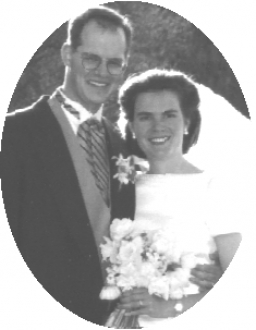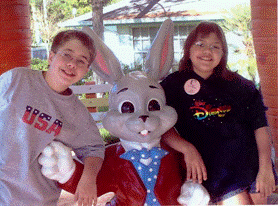
I was a senior in high school and had not been feeling “well” all year. However, my complaints were relatively non-specific which made it difficult for my doctors to pinpoint the “real” problem. Anything can cause chronic fatigue and headaches they told me and, as for the intermittent numb, tingling on my left side … well, they weren’t sure, but decided that it was probably nothing to worry about.
I began to feel better at the outset of the 1989 tennis season, which raised my spirits. As captain of the varsity team and the number one singles player, I needed to be in top condition. After spending spring break in Florida practicing with a friend from the team, I thought I’d finally shaken whatever had been plaguing me all year. However, my symptoms returned with a vengeance in mid-April. Determined to fight through, I tried desperately to ignore the nagging headaches, fatigue and the strange “sensation” on my left side. Finally, a particularly bad stiff neck prompted me to walk off the tennis court one day and drive myself to the doctor — a very uncharacteristic move, but enough was enough!
A blood test revealed mono and I was immediately sent for a precautionary MRI due to my 14-year history of Hydrocephalus and my recurrent stiff necks. Although the first set of pictures was relatively inconclusive, a neuro-radiologist recommended that I have another set taken with contrast in order to clarify two shadows which she had noticed on a second glance of the initial films.
As had been my pattern in the past, once an MRI was complete, I did not give it much thought. I figured that my parents would let me know if something was wrong and they would always tell me when the news was “good.” This time though there was an eerie silence. My parents didn’t say a word about anything — good or bad. At the time, I thought the avoidance seemed strange, but I chose not to worry. After all I had graduation, my summer job and my freshman year of college to think about.
Graduation came and went and the summer began as usual. Then one morning my mother confronted me with the news before I left for work. The most recent scans had revealed two tumors which would have to be biopsied as soon as possible. Although somewhat shocked, I quickly convinced myself that the surgeries would not be any more difficult than the numerous shunt-related procedures that I had experienced throughout my life. Thus, I was determined to get it all over with as soon as possible so that I could stay on course for college.
I was wrong. The combination of surgery and heavy steroids left me with virtually no use of my eyes, a severe lack of balance, wasted muscles, heavy brain swelling and a slew of subsequent shunt-related problems. However, both tumors were, as expected, deemed low grade astrocytomas, so I was sent home to recover without further treatment.
I worked through the next several months, pushing myself to walk a little further each day, build my strength and most importantly stay connected with the outside world. College was postponed a week before my “departure date” when I finally mustered the courage to say, “I’m not sure I can make it, at least not now.” At the same time, I did not let myself become too wrapped up in the day-to-day setbacks that I encountered. I found myself compartmentalizing each dark moment, and even each day as if completely different from what had come before and what may come next. Although somewhat subconscious this approach helped me tremendously throughout the ordeal.
My recovery was hampered mid-winter by a shunt infection and the discovery of a third slightly more aggressive tumor intertwined in the nerves of my lumbar spine. This third tumor not only prompted more surgery, but also sparked an on-going debate over whether or not to begin heavy chemotherapy and radiation.
After much deliberation and research my parents made the choice to watch, wait and most importantly let my body heal. Miraculously, however, the partial resection of this tumor alone triggered the use of my eyes, my balance and a true recovery process. To this day, the doctors don’t understand the correlation between the removal of the lumbar tumor and my sudden overall improvement.
It has been just over eight years since the initial tumor diagnosis and I feel extremely fortunate. As much as I would like to put the entire experience behind me, I have found it increasingly difficult to ignore. Over the past year, I have met and worked with some truly courageous people who are fighting many of the battles with which I am so familiar. This opportunity has only further inspired me contribute to the cause and make a difference in eradicating this all too consuming disease.
Kate Lund is now married and has obtained her doctorate in clinical psychology. See her other article entitled “Adult Survivor Explores Coping as a Process.”
2017

